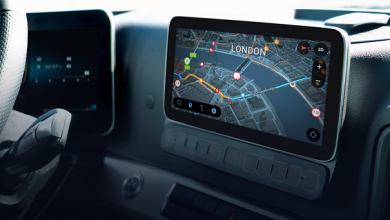Purpose-built Electric Vehicles for Ridesharing…

Emerging markets are characterised by booming urban centres, a fast-growing middle class, inadequate public transport, pollution, climate crisis. A vast majority of the population cannot afford to own a car or pay regular taxi fares.
If you have travelled to India or other ASEAN countries, you will find different kinds of vehicles, mostly built by small enterprises, catering to the needs for affordable last mile transport. You will find Jeepneys in Philippines, Tuk-tuks in Thailand, Trikes in Cambodia & Vietnam, Rickshaws & Share Autos in India. Most of these vehicles are over-crowded, not so safe, or comfortable, but are available & affordable. And the market is growing exponentially.

In India electric Rickshaws have proliferated, because they cost less than petrol/diesel vehicles, have lower running costs, and are more profitable for driver/owners. In the last few years over 1.5 million electric rickshaws, transport over 60 million commuters every day, at exceptionally low fares of around 20 cents for a ride. Around 90% of these electric rickshaws are manufactured by small enterprises. But the challenge today, is how safe or comfortable is it to travel in such ride share vehicles. It may not be safe for children to travel in such vehicles, and women may get more easily molested with no proper seating & over-crowding of vehicles.
Climate crisis, pollution & huge forex outflows due to oil imports, is making it imperative for developing countries to adopt clean energy & clean transportation.
Electric vehicles are now slowly becoming mainstream. The developed world is focused on speed, range & fast charging. While in the developing world affordable cost is the main criteria.
Hence the need to design & build EV’s that are most suitable for the developing world.
The needs of the Ridesharing Segment in the emerging markets are quite unique. We have multiple stakeholders needs to satisfy: Operators / Driver-Owners / Commuters.
Operators need a plug & ply vehicle with built in device for app / navigation & payments. Built in GPS, Internet connectivity, Wi-Fi, seat sensors etc., will help to better manage bookings and increase monetisation.
Drivers are looking for an affordable vehicle to hire or own, with a low total cost of ownership (TCO), especially low running costs & minimum downtime to increase earnings & maximise profits.
Consumers are expecting low fares comparable with public transport, and at the same time seeking comfort & safety.
Short Distance Ride Share category is a fast-growing segment, because of cheaper fares. However, currently there are no vehicles built to suit ride-share business.
The market opportunity is huge, “Over 16 million e-hailing trips take place daily across the globe (6 billion trips per year). By 2030, this total is projected to increase to around 83 billion trips. Recent studies predict a growth CAGR ranging from 15 to 28 percent, which will lead to an increase in market size to 285 billion USD by 2030.” (Source: https://www.adlittle.com/en/rethinking-demand-mobility)
Purpose-built electric vehicles for ride-sharing requires a holistic approach to become a major success, major auto manufacturers may be at a disadvantage with high overheads, and encumbered by legacy systems & processes. EV Startups, passionate about this niche ride-sharing segment, spearheaded by entrepreneurs with a purpose to make a positive impact in affordable & clean mobility solutions, will win big.
Author:
Christie Fernandez is a serial entrepreneur, brand/marketing consultant, autodidact, and polymath. Christie, the founder of Sooorya EV Pte Ltd, is on a mission to create a positive impact in clean transportation & energy.
Christie is redefining how automobiles are designed, manufactured, and sold, with a strong focus on sustainability, profitability & societal impact.
Published in Telematics Wire





